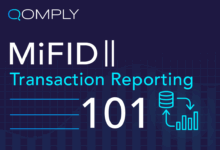Algorithmic Trading Risk Management Platform: Real-Time Position Monitoring And Alerts
Algorithmic trading risk management platform with real-time position monitoring and alerts sets the stage for effective risk mitigation and informed decision-making in the fast-paced world of trading. This innovative platform not only ensures real-time tracking of positions but also provides timely alerts to users, enhancing their ability to manage risks efficiently. Dive into the world of algorithmic trading risk management and discover how this platform revolutionizes risk control and monitoring.
Introduction to Algorithmic Trading Risk Management Platform
An algorithmic trading risk management platform is a software tool designed to help traders mitigate risks associated with algorithmic trading strategies. These platforms utilize advanced algorithms to monitor real-time positions and provide alerts to traders when certain risk thresholds are met.
Importance of Real-Time Position Monitoring and Alerts
Real-time position monitoring is crucial in algorithmic trading risk management as it allows traders to quickly assess their exposure to market fluctuations and make informed decisions to protect their investments. Alerts serve as an early warning system, notifying traders of potential risks or opportunities before they escalate.
Benefits of Using Algorithmic Trading Platforms for Risk Management
- Automated Risk Management: Algorithmic trading platforms can automatically execute risk management strategies based on pre-defined parameters, eliminating human error and emotions from the decision-making process.
- Efficient Execution: These platforms can execute trades at high speeds, enabling traders to capitalize on market opportunities and minimize losses in volatile conditions.
- Diversification: By using algorithmic trading strategies, traders can diversify their portfolios and spread risk across multiple assets, reducing overall exposure to market fluctuations.
- Data-Driven Insights: Algorithmic trading platforms analyze vast amounts of data to generate insights and recommendations, helping traders make more informed decisions based on real-time market conditions.
Real-Time Position Monitoring Features
Real-time position monitoring in algorithmic trading risk management platforms is crucial for traders to stay updated on their current positions and make timely decisions. Here are some key features of real-time position monitoring:
1. Live Position Updates
- Constant updates on open positions, including entry price, current price, profit/loss, and risk level.
- Real-time tracking of market movements to assess the impact on positions.
2. Risk Exposure Analysis
- Calculations of overall risk exposure based on current positions and market conditions.
- Alerts for potential risks exceeding predefined thresholds to prevent losses.
3. Portfolio Management Tools
- Consolidated view of all positions within a single interface for better portfolio management.
- Tools for rebalancing portfolios and adjusting positions based on real-time data.
Real-time position monitoring helps traders in making informed trading decisions by providing immediate visibility into their portfolio’s performance and risk exposure. By staying updated on market movements and position changes, traders can quickly react to volatile situations, implement risk mitigation strategies, and capitalize on lucrative opportunities.
Examples of real-time position monitoring tools include TradingView, Thinkorswim, and MetaTrader, which offer functionalities such as customizable dashboards, alerts, risk management tools, and detailed position analysis to empower traders with real-time insights for effective decision-making.
Alerts Functionality in Risk Management Platforms
When it comes to algorithmic trading risk management platforms, alerts play a crucial role in helping traders stay informed about their positions and potential risks in real-time. These alerts serve as timely notifications that can help traders make quick decisions and take necessary actions to mitigate risks effectively.
Types of Alerts Used
- Price Alerts: These alerts notify traders when a stock reaches a certain price level, enabling them to make timely trading decisions.
- Risk Alerts: These alerts are triggered when a predefined risk threshold is breached, helping traders manage their risk exposure effectively.
- Volume Alerts: Alerting traders when the trading volume of a particular asset reaches a specified level can help them identify potential opportunities or risks.
- News Alerts: These alerts inform traders about significant news events that could impact the market, allowing them to adjust their positions accordingly.
Setting Up Customized Alerts
Setting up customized alerts for specific risk parameters is essential for tailoring risk management strategies to individual trading preferences. By defining personalized alert thresholds based on factors such as volatility, portfolio size, or specific asset classes, traders can receive alerts that are relevant to their unique trading style and risk tolerance levels. Customized alerts help traders stay proactive in managing their risks and make informed decisions based on their specific trading objectives.
Risk Management Strategies in Algorithmic Trading
In algorithmic trading, risk management strategies play a crucial role in ensuring the overall success and stability of trading operations. These strategies are designed to minimize potential losses and protect investments in the volatile world of financial markets.
Common Risk Management Strategies
- Diversification: By spreading investments across different assets, sectors, or markets, traders can reduce the impact of a single loss on their overall portfolio.
- Stop-loss Orders: Setting predetermined price levels at which a trade will be automatically closed helps limit losses in case the market moves against the position.
- Risk Parity: Allocating capital based on the risk level of each asset class helps maintain a balanced risk-return profile in the portfolio.
- Position Sizing: Determining the appropriate size of each trade based on the risk tolerance and account size can help control the overall exposure to market fluctuations.
Integration into Algorithmic Trading Risk Management Platform
These risk management strategies are seamlessly integrated into the algorithmic trading risk management platform to provide traders with real-time monitoring and control over their positions. The platform allows users to set up stop-loss orders, adjust position sizes, and diversify their portfolios with ease.
Comparison of Risk Management Approaches
| Strategy | Effectiveness |
|---|---|
| Diversification | Effective in reducing specific risk but may limit potential returns. |
| Stop-loss Orders | Helpful in limiting losses but can result in premature exits during volatile market conditions. |
| Risk Parity | Ensures a balanced risk exposure but requires constant monitoring and rebalancing. |
| Position Sizing | Allows for better control over risk management but requires accurate assessment of risk tolerance. |
Closing Notes
Explore the dynamic realm of algorithmic trading risk management platforms with real-time position monitoring and alerts, where cutting-edge technology meets strategic risk management. Elevate your trading experience with this sophisticated platform that empowers users to navigate the complexities of the market with confidence and precision. Stay ahead of the curve and embrace the future of risk management in algorithmic trading today.


